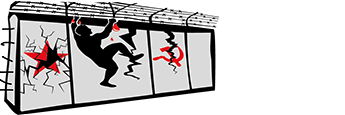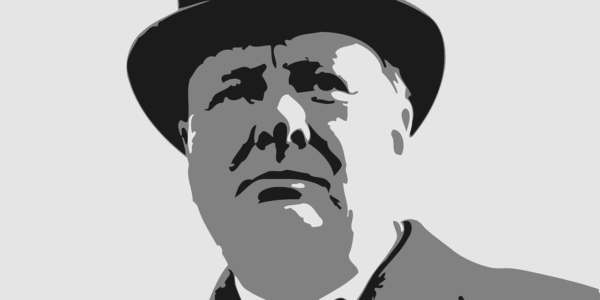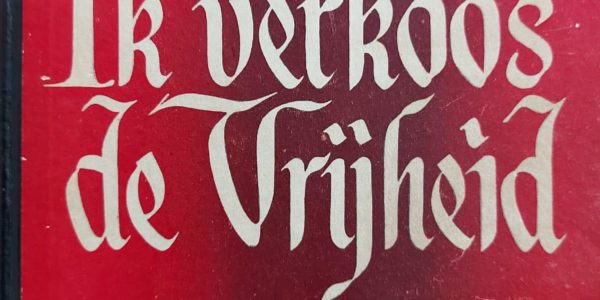by Patrick van Schie

This month it is exactly 75 years ago that the communists finally seized power in Czechoslovakia (at the time, the current Czech Republic and Slovakia formed one country). In all the countries that would disappear behind the Iron Curtain after the Second World War, a similar process took place of the elimination of pro-democratic forces and the establishment of the dictatorship of the communist party. In Czechoslovakia, however, this took longer, which is why many people – both among the democratically minded Czechoslovaks and in the West – harbored the illusion for the longest time that the country would be spared an ‘equalisation’.
What happened before
Before World War II, Czechoslovakia was the only country of the later “Eastern Bloc” in which democracy had survived. In the autumn of 1938 and the following months, this democracy nevertheless fell because Adolf Hitler first claimed and received parts of the country under the threat of launching military actions – Neville Chamberlain, Prime Minister of Great Britain, and Edouard Daladier, Prime Minister of France, accepted this claim under an illusion of appeasement –and subsequently occupied the rump state of the Czech Republic and turned Slovakia into a vassal state.
At the end of World War II, American troops entered the westernmost part of the country, while the Red Army drove out the Germans in most of the country. The Americans soon withdrew their troops from Czechoslovakia, the Soviet Union was slow to do so. Nevertheless, pre-war democracy seemed to be restored in Czechoslovakia. The non-communist Benes, already president before the war, returned to his post. The first parliamentary elections in May 1946 went smoothly, although the Red Army had not yet completely withdrawn at that time, contrary to what had been agreed. The Communist Party became the largest – unique as long as elections were free in what would soon become the ‘Eastern Bloc’ – partly explained by the fact that many Czechoslovaks felt betrayed by the Western powers in 1938 (the Munich Agreement) [ not that the Soviet Union then came to the aid of the country against Hitler, by the way] and partly from the successful response by the communists to widespread anti-German sentiment. Excessive violence was committed against the German-speaking population (in the western edges of the country) after the liberation, regardless of whether or not these citizens were guilty of collaborating with the German National Socialist regime. The group of German-speakers was forced to go out on the street recognisably with a yellow bracelet. Most of them were driven out of the country during this period.
In the country as a whole, the Communist Party won about 38% of the vote in the parliamentary elections on May 26, 1946. In Slovakia it was less, incidentally still 31%. In this part of the country they had to leave the Democratic Party (a coalition of non-communists) for themselves. The Democratic Party won 62% of the vote in Slovakia.
Disturbing signals
Despite the great influence of the communists on the government, it initially seemed possible that Czechoslovakia could remain a democracy. The country was not (like South-Eastern Europe) ‘awarded’ by a Western great power to the Soviet sphere of influence, it could boast a democratic tradition and the first elections after the Second World War were, as mentioned, relatively free.
Nevertheless, it soon became clear after those elections that the communists left a heavy mark on socio-economic policy. The new government immediately began forced land expropriations, and two months later large-scale nationalizations of other companies took place. These were also implemented in some Western European democracies, such as in Great Britain under a Labour government, but in Czechoslovakia they went much further. In May 1947, the Czechoslovak communists also demanded a special millionaire tax as a form of expropriation
A serious sign that the Czechoslovak government could no longer act independently appeared in July 1947. The United States had presented the Marshall Plan, a massive aid program to help war-ravaged Europe get back on its feet. It was also offered to the countries of Central and Eastern Europe, but the Soviet Union forbade its new satellite states to accept it. Czechoslovakia did show interest by an unanimous decision of the government. But after a few days, the Czechoslovak leaders had to come to Moscow. There, on July 10, they were forced to turn down the Marshall aid.
The internal erosion of democracy began in the autumn of 1947. First, some non-communist ministers received letter bombs. Subsequently, the communists started a smear campaign against the Democratic Party in Slovakia. Under the guise of all sorts of false accusations, around 500 members of that party were arrested, including Slovak Deputy Prime Minister Ursing (who had also recently been chairman of the Democratic Party) and Justice Minister Drtina.
For a long time, the communists received help from part of the Social Democratic Party, led by Fierlinger. That growing unrest arose in that party about the communist machinations became apparent at a party congress of the social democrats in November 1947. Not Fierlinger, but Lauman was elected leader, with 62% of the members behind him. Lauman made it clear that he did not want too close cooperation with the communists and he openly declared himself “against any form of dictatorship”.
It had already been announced by then that the communists were also out for autocracy in Czechoslovakia. The Communist Party leader Gottwald had already declared in all openness in December 1929 that he regarded Moscow as his ‘headquarters’. “We are going to Moscow to learn from the Russian Bolsheviks how best to kill you. And as you know, the Russian Bolsheviks are very skilled in this field.”
The communist coup in February
When the national government took office in May 1946, it had already been decided that new elections would be held two years later. The communists had set themselves the goal of getting at least 51% of the vote next time, but their party was losing popularity. It was therefore important to act before the May 1948 elections.
In February 1948, the communist interior minister Nosek dismissed a large number of non-communist police commissioners to replace them with fellow party members. The non-communist majority in the cabinet whistled him back on February 13, demanding that he reinstate the dismissed commissioners. Instead of doing this, Nosek went into hiding; he called in ‘sick’. Twelve non-communist ministers – a majority of the cabinet – submitted their resignations on 20 February. They hoped that a cabinet crisis would lead to new elections, in which the influence of the communist party would be pushed back.
But that was too traditionally democratic thinking. The communists had no intention of playing the game by democratic procedures. The communist party declared a state of emergency; although it was not authorized to do so at all. Nosek, the now acted as a communist interior minister, announced an exit ban. The communist minister of information prevented his non-communist colleagues from being heard on the radio. Meanwhile, communist workers were mobilized to paralyze the country with strikes. Beforehand, in many places, partisan workers’ militias had been provided with weapons imported from the Soviet Union. Under heavy pressure, President Benes gave in on February 25 and appointed a predominantly communist government.
The same day this new government decreed that a large portrait of Stalin would henceforth be displayed in all schools in the country. Two days later, numerous professors at Prague’s Charles University were fired. The day before, on February 26, the Communist Party newspaper, the Rudé právo, wrote: “The people are clearing away saboteurs, traitors and untrustworthy elements.” Immediately followed raids on rival party offices and hundreds of non-Communist politicians were convicted in mock trials: 10 of them to death, 48 to life, and 581 to other long prison terms.
In addition, hundreds of thousands of non-communists were purged in a matter of weeks: they lost their jobs. On February 29, Prime Minister Gottwald announced the “redistribution” of all land holdings over 50 hectares. That same day, the former Slovak Minister of Justice, Drtina, was found seriously injured in his home; according to the communist authorities, he would have committed an “attempted suicide”. Subsequently, on March 10, Minister of Foreign Affairs Jan Masaryk – son of the famous post-World War I president Tomas Masaryk and himself politically non-alligned man who had remained as minister despite everything – was found dead under the window of his ministry. Suicide, according to the regime; but the suspicion immediately arose that he had been pushed out of a window 2 stories higher.
The consequences
The equalization had now also started in Czechoslovakia and the communists didn’t waste any time on it. The other parties were in no time banned or forced to join the completely Communist-controlled “National Front”; the social democrats, where fellow traveler. Fierlinger immediately pushed aside the party leader Lauman who had been democratically elected only three months earlier, now supposedly enthusiastically (the left wing was also really enthusiastic) joined their socialist ‘brothers’.
Even before the new elections in May 1948, a new Constitution was presented, introduced by the following text: ‘The Czech and Slovak peoples declare their determination to turn their liberated state into a people’s democracy [the name communists invariably used for their dictatorship; PvS], which will open the way to socialism.” In the elections later that month, only the (communist) “National Front” was allowed to participate, which won more than 90% of the vote in the Czech Republic and almost 86% in Slovakia. The rest of the voters had nevertheless dared to vote blank or to invalidate the ballot paper.
From an economic point of view, Czechoslovakia was subjected to stricter communist policies than neighboring Poland and Hungary. In 1953 all savings were robbed in one fell swoop; “communized” in the jargon of the rulers. In the mid-1950s, 90% of the workforce worked in a state-controlled company. Most of the smaller companies had also been hurt by now.
In the first 6 years of communist rule alone, 200,000 Czechoslovaks disappeared behind bars or in one of the 422 camps in the country; this on a population of 12.6 million. These were not only “bourgeois” inhabitants (not that this would be any less bad, but formally the communists only saw them as opponents). Of those convicted of “crimes against the state,” 39.1% were workers. The vast majority of the rest were classified as “low office workers” or as farmers. Until the end of communist rule in 1989, about 265,000 people would be convicted on political grounds (in the later years, the scale, not the severity, of the repression decreased compared to the early years). About 4,500 people died in a cell or in a camp.In the first six months after the coup, around 12,000 Czechoslovaks managed to flee their country. However, in the entire period up to the end of the communist regime, at least 276 people would also die trying to flee across the border to West Germany.
The only advantage of the coup was for the West, which was finally shaken up. Not only the non-socialist parties but also most social-democratic parties in Western Europe vehemently protested against the establishment of yet another communist dictatorship. In many Western European countries, the communist parties quickly lost popularity. There was also a growing awareness that the West had to protect itself against the advancing communism. More than a year after the Prague coup, NATO was founded, a Western alliance that sought to oppose the advancing Soviet Communism politically and militarily.
Interesting links:
https://archive.org/details/gov.archives.arc.1538222
Image: public domain CC0




Follow Us!